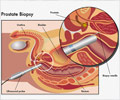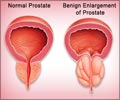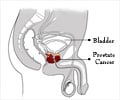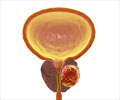Surgery
Surgery may be opted if the patient is medically fit for an operation.
There are three options:
- Pelvic lymphadenectomy:
Sometimes the gland as such need not be removed, only the pelvic lymph nodes are taken out. Lymph nodes are aggregates of tissue taking part in filtration of lymph and storage of lymphocytes (white blood cells). The process is called pelvic lymphadenectomy.
- Radical prostatectomy:
In certain cases the whole of the prostate gland may be removed along with the lymph nodes. This is radical prostatectomy.
There are two types of radical prostatectomy:
- Retropubic prostatectomy is a surgical procedure to remove the prostate through an incision in the abdominal wall. The nearby lymph nodes may be removed at the same time.
- Perineal prostatectomy is a surgical procedure to remove the prostate through an incision made in the area between the scrotum and anus (perineum). The nearby lymph nodes will have to be removed through a separate incision in the abdomen.
Radical prostatectomy can now be done using a minimal surgical approach called laparoscopic radical prostatectomy. The patient enjoys an early post-operative recovery as there is minimal cut and less pain.
Robotic radical prostatectomy is the new thing in which the whole surgery to remove prostate is done using a robot controlled by a trained surgeon. The advantages are less blood loss, minimal scar, early discharge from the hospital, better continence and perhaps less chances of impotence.
Side effects of radical prostatectomy include:Side effects of radical prostatectomy include:
- Erectile dysfunction
- Leakage of urine and leakage of stools
- Transurethral resection of the prostate (TURP):
In men who cannot undergo a major surgery due to any reason (for example an advanced age), the surgeon my resort to removing a part of the affected tissue alone. This is Transurethral Resection of the prostate (TURP).










